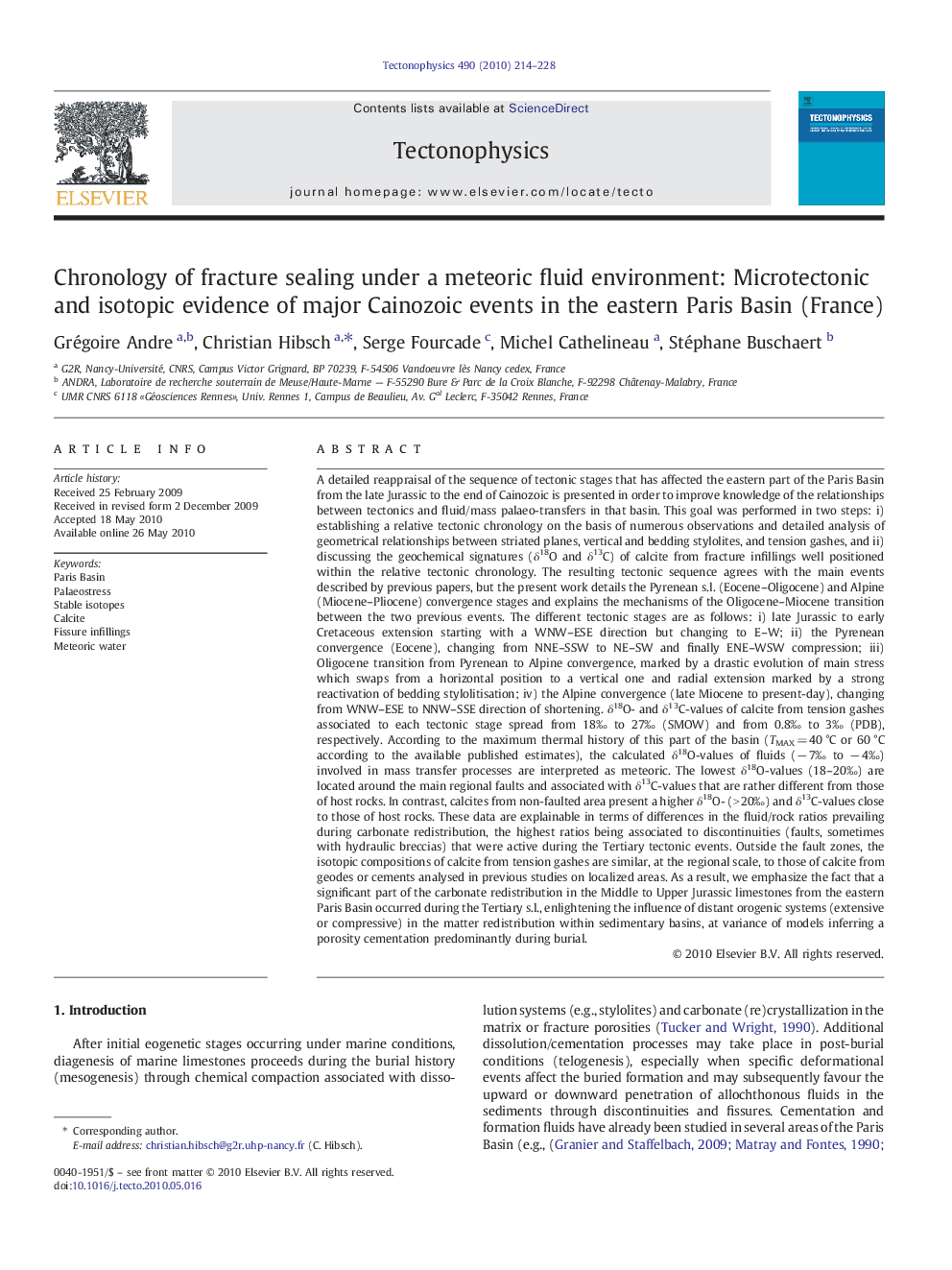| کد مقاله | کد نشریه | سال انتشار | مقاله انگلیسی | نسخه تمام متن |
|---|---|---|---|---|
| 4693454 | 1636864 | 2010 | 15 صفحه PDF | دانلود رایگان |

A detailed reappraisal of the sequence of tectonic stages that has affected the eastern part of the Paris Basin from the late Jurassic to the end of Cainozoic is presented in order to improve knowledge of the relationships between tectonics and fluid/mass palaeo-transfers in that basin. This goal was performed in two steps: i) establishing a relative tectonic chronology on the basis of numerous observations and detailed analysis of geometrical relationships between striated planes, vertical and bedding stylolites, and tension gashes, and ii) discussing the geochemical signatures (δ18O and δ13C) of calcite from fracture infillings well positioned within the relative tectonic chronology. The resulting tectonic sequence agrees with the main events described by previous papers, but the present work details the Pyrenean s.l. (Eocene–Oligocene) and Alpine (Miocene–Pliocene) convergence stages and explains the mechanisms of the Oligocene–Miocene transition between the two previous events. The different tectonic stages are as follows: i) late Jurassic to early Cretaceous extension starting with a WNW–ESE direction but changing to E–W; ii) the Pyrenean convergence (Eocene), changing from NNE–SSW to NE–SW and finally ENE–WSW compression; iii) Oligocene transition from Pyrenean to Alpine convergence, marked by a drastic evolution of main stress which swaps from a horizontal position to a vertical one and radial extension marked by a strong reactivation of bedding stylolitisation; iv) the Alpine convergence (late Miocene to present-day), changing from WNW–ESE to NNW–SSE direction of shortening. δ18O- and δ13C-values of calcite from tension gashes associated to each tectonic stage spread from 18‰ to 27‰ (SMOW) and from 0.8‰ to 3‰ (PDB), respectively. According to the maximum thermal history of this part of the basin (TMAX = 40 °C or 60 °C according to the available published estimates), the calculated δ18O-values of fluids (− 7‰ to − 4‰) involved in mass transfer processes are interpreted as meteoric. The lowest δ18O-values (18–20‰) are located around the main regional faults and associated with δ13C-values that are rather different from those of host rocks. In contrast, calcites from non-faulted area present a higher δ18O- (> 20‰) and δ13C-values close to those of host rocks. These data are explainable in terms of differences in the fluid/rock ratios prevailing during carbonate redistribution, the highest ratios being associated to discontinuities (faults, sometimes with hydraulic breccias) that were active during the Tertiary tectonic events. Outside the fault zones, the isotopic compositions of calcite from tension gashes are similar, at the regional scale, to those of calcite from geodes or cements analysed in previous studies on localized areas. As a result, we emphasize the fact that a significant part of the carbonate redistribution in the Middle to Upper Jurassic limestones from the eastern Paris Basin occurred during the Tertiary s.l., enlightening the influence of distant orogenic systems (extensive or compressive) in the matter redistribution within sedimentary basins, at variance of models inferring a porosity cementation predominantly during burial.
Journal: Tectonophysics - Volume 490, Issues 3–4, 30 July 2010, Pages 214–228